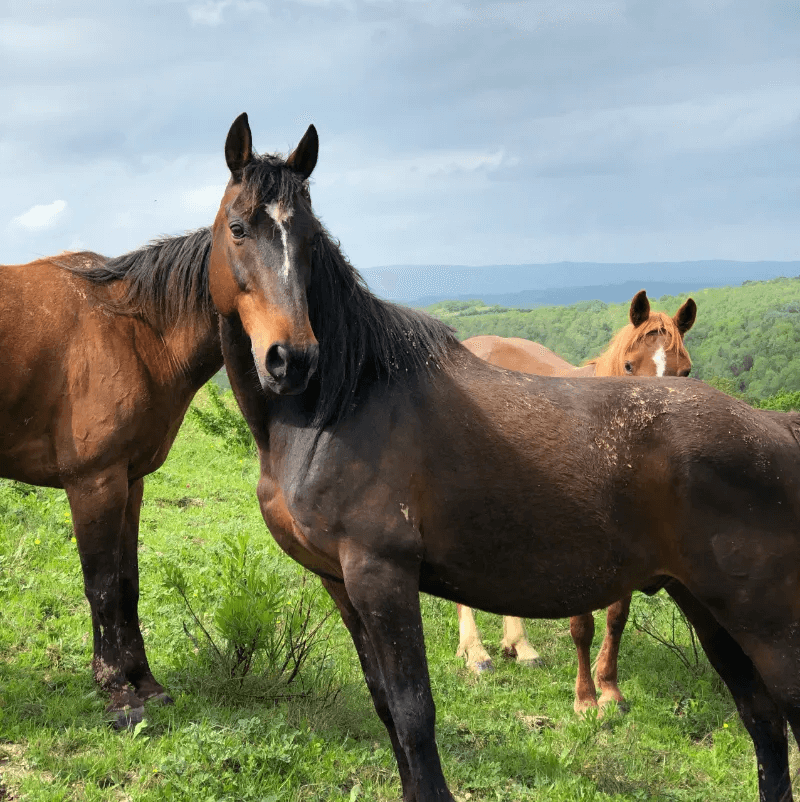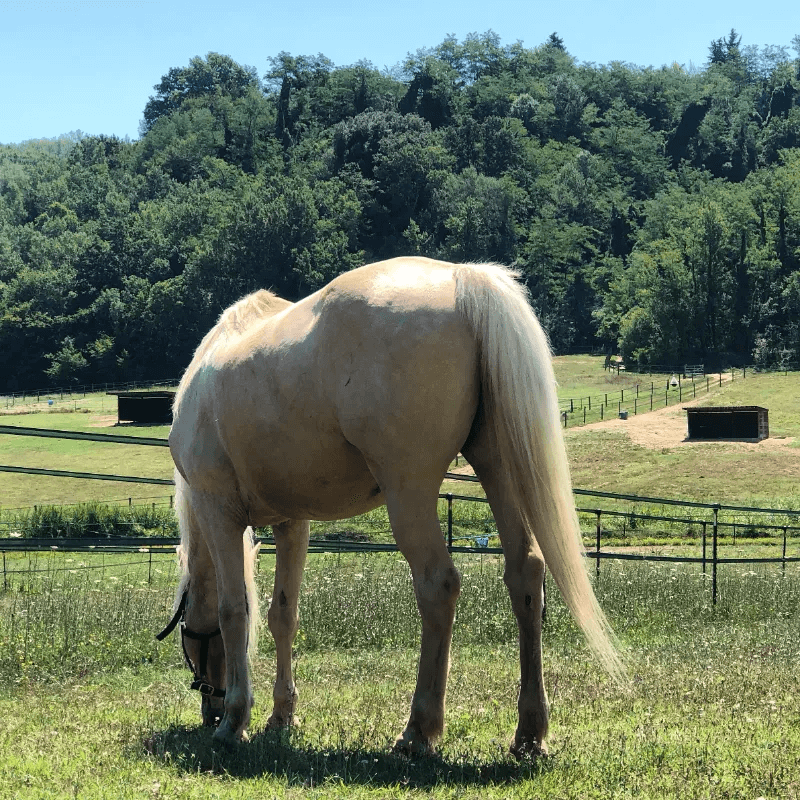By nature, horses are highly social herd animals, built to graze in the great outdoors and roam across large territories. Even though they thrive on a combination of companionship, freedom, and consistent forage – these conditions are unfortunately difficult to achieve in conventional stabling facilities.
The logistical benefits of stabling horses cannot be overlooked, especially for those involved in equestrian sports or living in urban areas with limited space – and the challenge lies in bridging the gap between the practicality of stables and the innate needs of our horses.
Achieving this balance calls for a deep understanding of horse behavior, a readiness to challenge the status quo, and a commitment to implementing necessary changes in facility design.
Some horses kept in stables today are isolated for far longer than they should be, often stabled horses have limited movement in their stalls and experience significant changes in their diet from what would be considered normal to their species.
This shift from natural living conditions can have numerous implications for their health and well-being and can lead to the manifestation of stress-related behaviors, digestive issues, and other health complications.
Read on to discover how we can do better for our horses while still enjoying the benefits of stabling:
Better nutrition practices
Traditionally, horses in stables are fed two or three large meals per day, often composed of high-energy feed like grains. However, in the wild, horses are designed to graze almost constantly on fibre-rich, low-energy feed, spending as much as 14-18 hours per day foraging. Their digestive systems, particularly their small stomachs and constant gastric acid production, are designed with this lifestyle in mind.
By providing smaller, more frequent meals, or 24/7 access to hay, we can simulate horses’ natural grazing patterns and better align their eating habits. This approach has been shown to reduce the risk of health problems such as gastric ulcers, colic, and laminitis, all of which are associated with large, infrequent meals and periods of fasting.
Implementing this change can seem daunting to many horse owners, especially those managing multiple horses in one location – however, with modern technology, such as slow feeder designs and automated feeders, it’s becoming easier to provide horses with constant access to forage without continuous monitoring and feed costs that go through the roof.
Increased Turnout Time

Though the exact amount of space a horse requires can vary depending on their lifestyle and work regime, all horses benefit from as much turnout time as possible.
Extended periods of confinement in stalls can lead to a plethora of health and behavioral problems. These can range from respiratory diseases due to accumulated dust and ammonia in stable air, to behavioral vices such as weaving or cribbing, which are often signs of stress or boredom.
Increasing the amount of turnout time provides multiple benefits to horses of all ages and breeds. Physically, it allows them to exercise freely, aiding digestion, muscle tone, and hoof health.
Mentally, it allows them to express their natural behaviors, like grazing, rolling, running, and socializing with other horses (even from across the fence). This freedom promotes better psychological health which leads to improved overall wellbeing. Even if it’s not possible to provide 24/7 turnout, any time spent outside the stable is beneficial to a horse.
Enriched Environment
One of the most common and unfortunate misconceptions about stabled horses is that they are happy with monotony. Horses are intelligent animals, requiring mental stimulation just as much as they need physical exercise. A stabled environment devoid of variety and enrichment can lead to boredom, stress, and the development of stereotypic behaviors.
Adding environmental enrichments to the stable can greatly improve the mental health of stabled horses. This could be as simple as providing stable toys or introducing objects for them to investigate, such as brushes, rubber balls or lick blocks. While mirrors have been shown to reduce stress in isolated horses, providing a stable companion that can touch, smell, and see the other horse alleviates loneliness like nothing else.
Regular Exercise
The exercise regime for stabled horses often revolves around their working schedules, usually entailing being ridden or driven. However, just as human fitness involves more than one kind of exercise, horses also need varied exercise for optimal health. It contributes to their physical fitness and provides essential mental stimulation, breaking the monotony of their daily routine.
Different forms of exercise, such as lunging, trick training and hand walking in a secure paddock, provide the varied mental and physical challenges horses’ minds crave. Varied exercise schedules can keep horses more engaged and willing to work, helping to reduce the risk of injuries and promoting overall health and longevity.
Education for Owners and Caretakers

The best practices in horse care are always evolving, informed by ongoing scientific research and advancements in veterinary medicine. For owners and caretakers, staying informed about the latest research, guidelines, and discussions in the field is crucial. Education should never be a one-off event but rather a lifelong commitment.
Continuous education helps ensure that we make the best possible decisions for our horses. It equips us with the knowledge to evaluate the appropriateness of traditional horse-keeping practices, to understand the reasons behind recommended changes, and to innovate solutions for problems we encounter.
Resources for this education can come from many sources, including veterinary advice, scientific literature, reputable online resources, and sharing experiences with other horse owners and professionals.
By focusing on creating an environment that respects the horse’s natural behavior and physiological needs, we can significantly improve the health – and happiness – of our stabled horses.